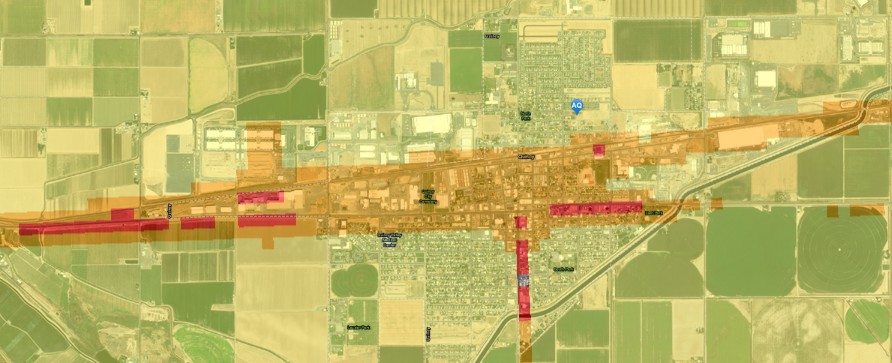Diesel pollution from data centers
We issue air quality permits to data centers to limit air pollution that comes from diesel-powered backup generators. We also keep track of the combined impacts from the diesel exhaust that may come from these generators.
Data centers — sometimes called server farms — house the servers that manage email, store data, and run apps (desktop or mobile). If you shop online, use social media, store photos in "the cloud," or use AI (artificial intelligence), your information passes through a data center.
Most of the data centers regulated by Ecology are located in Quincy and the Wenatchee area, because those areas offer dependable, lower cost electricity. Data centers are also located in other areas of Washington, regulated by local clean air agencies.
Dell Data Center in Quincy
Monitoring diesel pollution in Quincy
In 2012, the Pollution Control Hearings Board (PCHB) ordered Microsoft and other data centers to assess the health risks of all sources of diesel particle pollution in Quincy.
The goal of this assessment was to:
- Determine the community locations with the highest exposure to diesel engine emissions.
- Estimate the health risks associated with that exposure.
- Determine the sources that contribute to those risks.
The PCHB also ordered us to review the assessment and use the results to improve future air quality permitting decisions.
In August 2018, the data centers submitted a final health risk assessment using an approved method. However, we identified some technical issues that led to inaccurate results. In our August 2020 report (Español), we:
- Conducted a follow-up analysis.
- Assessed nitrogen dioxide pollution.
- Analyzed recently-available monitoring data.
- Recommended follow-up actions.
The map below of the Quincy area links to an interactive map that shows levels of diesel particles from various sources.
Click on the image to open an interactive data map.
Air pollution from data centers
Each data center has many diesel-powered generators that are tested regularly. The air pollution from these generators that can harm health comes mostly from tiny particles in diesel exhaust and nitrogen dioxide (NO2).
Diesel exhaust is a toxic air pollutant, containing fine particles that can cause health problems for people who are exposed frequently and at high enough levels. These tiny particles are too small to be filtered out of the air by the nose and upper respiratory system. The particles go deep into the lungs, where they can cause damage and chemical changes.
Nitrogen dioxide (NO2) is another toxic air pollutant that can cause breathing problems even when you're exposed for a short time, from 30 minutes to 24 hours. Nitrogen dioxide can make breathing harder for people who already have lung problems, such as asthma. It also adds to acid rain and smog.
When required, a data center must prepare a health impact assessment of their toxic air pollution (diesel exhaust and nitrogen dioxide). We must review each data center's health impact assessment before issuing a notice of construction permit. We must issue this permit before a data center can be built or expanded.
Data centers regulated or reviewed by Ecology (listed by city)
This is not a complete list of every data center in Washington. For information about other data centers, contact the local clean air agency for that county.
Related links
Contact information
Taylor Van Cise
Communications Manager
taylor.vancise@ecy.wa.gov
360-688-8070



